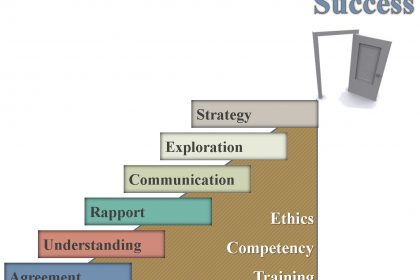
In today’s fast-paced and competitive business environment, many organizations are realizing the benefits of coaching for their employees. Coaching helps individuals improve their performance, develop new skills, and reach their full potential. Organizations often face the dilemma of choosing between an internal or external coach. In this article, we will explore the differences between these two types of coaches and discuss the advantages and disadvantages of each. Start with definitions:
- An internal coach is already a part of the organization, an employee that others respect, and is trained to provide coaching services to other employees.
- An external coach is an independent, trained and ideally credentialed professional who is brought in from outside the organization to provide coaching services.
- A client is the individual to receive the coaching services.
Advantages of Internal Coaching:
One of the key advantages of having an internal coach is their familiarity with the organization’s culture, values, and processes. They have a deep understanding of the challenges and dynamics of the workplace. Moreover, internal coaches have an inside perspective on the organization’s goals and objectives.
Another advantage of internal coaching is the cost-effectiveness. Since internal coaches are already a part of the organization, the cost associated with hiring an external coach is alleviated. This makes it a budget-friendly option, especially for smaller organizations with limited resources.
Disadvantages of Internal Coaching:
Internal coaching also has its limitations. One major drawback is the potential lack of objectivity. Internal coaches may have pre-existing relationships with the clients or may have biases around people, departments, or projects, which can influence the coaching process. Biases can hinder the effectiveness of the coaching and limit the client’s growth and development.
Internal coaches may face challenges in separating their coaching role from their regular job responsibilities. They may find it difficult to invest sufficient time and energy into the coaching process, leading to subpar results. This is especially true for those who juggle multiple roles and responsibilities.
While cost-effectiveness is perceived as an advantage, there are complicating factors. Commonly internal coaches are trained internally by non-coaches, so the value of their coaching is far more limited. The best practice is external training for internal coaches, which has costs for both the training program and the time away from their other job.
Advantages of External Coaching:
External coaches are more easily able to ensure confidentiality in a coaching engagement which will enhance the results exponentially. Additionally, external coaches can serve clients to talk about much more than is possible with internal coaches.
External coaches help the client consider fresh perspectives. The objectivity of external coaches ensures the client’s performance and challenges are explored in a supportive and neutral way leading to new insights and strategies for improvement.
Moreover, external coaches bring a wealth of expertise from extensive coach training, and their experience providing coaching services in various organizations. They have exposure to a broad spectrum of methodologies and can bring best practices and innovative approaches to the coaching process. This can result in a more comprehensive and effective coaching experience for the client.
Disadvantages of External Coaching:
One of the disadvantages is the high costs associated with hiring an external coach. Organizations will want to consider the financial implications and determine that the return on investment justifies the expense.
Additionally, external coaches may want time to familiarize themselves with the organization’s culture and dynamics.
Conclusion:
When it comes to choosing between an internal or external coach, organizations will want to weigh the pros and cons based on their specific objectives and circumstances. While internal coaching offers familiarity and cost-effectiveness, external coaching brings objectivity and expertise. It is essential for organizations to define their coaching goals and consider factors such as budget, objectivity, and expertise to make an informed decision. Ultimately, the success of coaching relies on the commitment and collaboration between the coach and client, regardless of whether they are internal or external.
A best practice is internal coaches for entry to mid-level employees, external training for internal coaches, and external coaches for the higher-level employees and leaders.
A note: the Center for Coaching Certification collaborates with Coach-123 to provide coaches at all levels in the organization within the desired the investment spectrum by tapping a sophisticated group of professionals transitioning into coaching.





